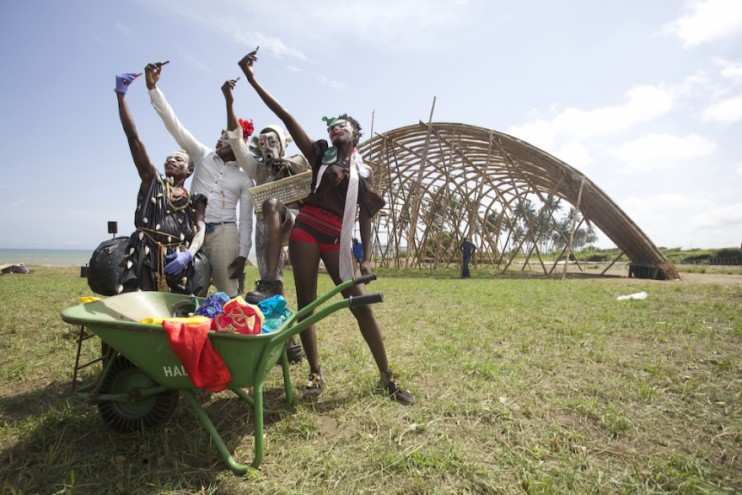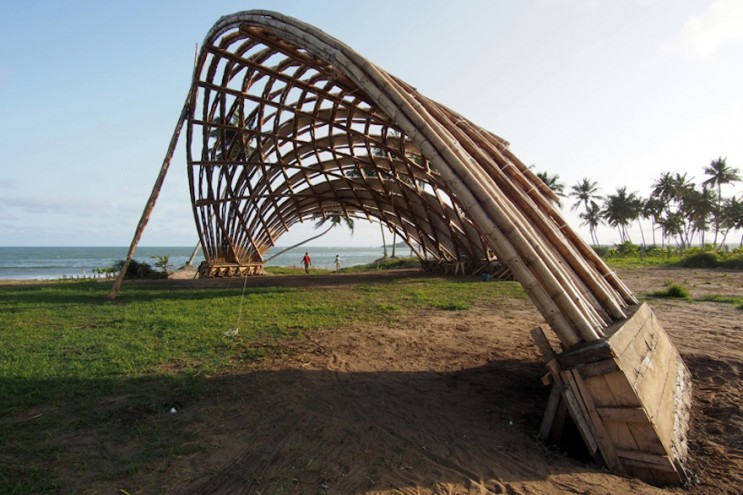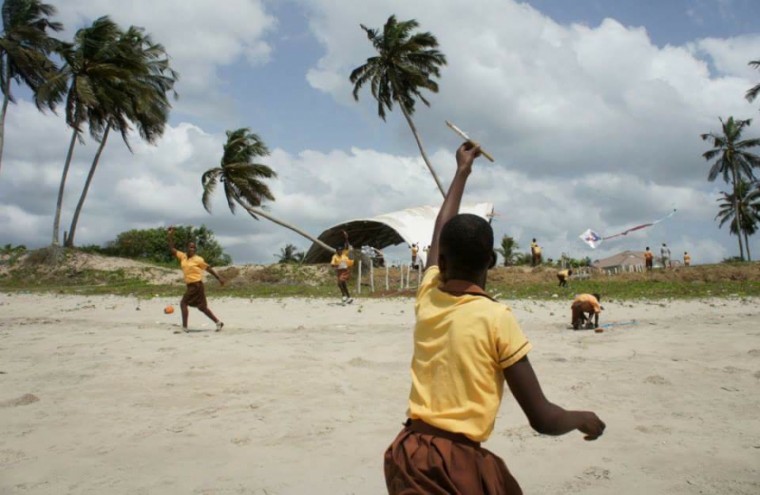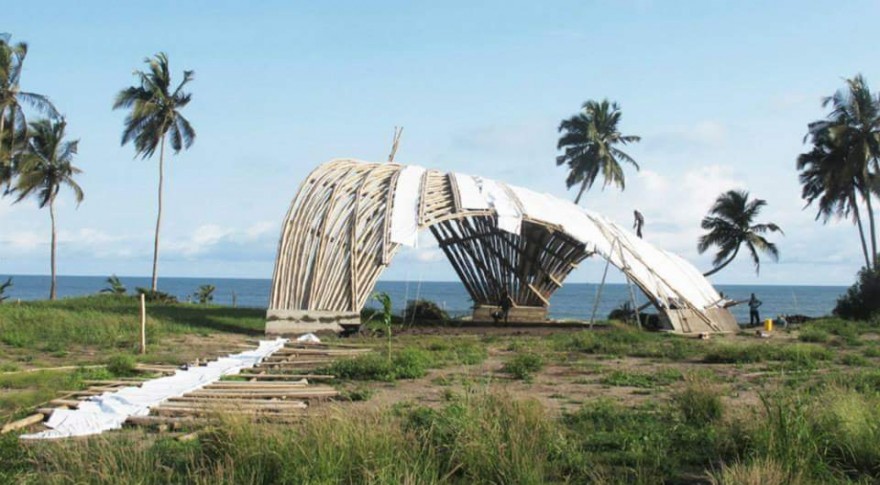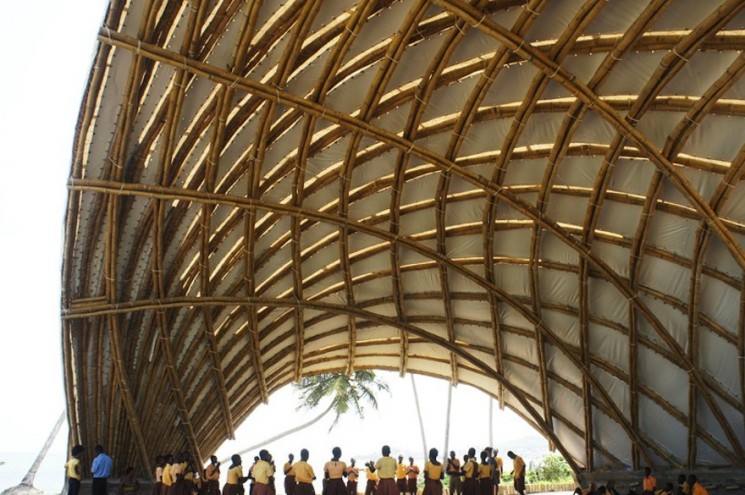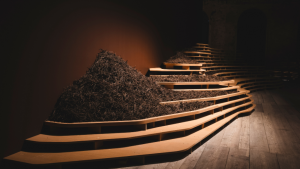Designed by the [applied] Foreign Affairs ([a]FA) department at the Institute of Architecture at the University of Applied Arts Vienna, the Haduwa Arts and Culture Institute in Ghana is a bamboo canopy created to function as a meeting ground for artists and cultural practitioners.
The [a]FA team collaborated with LAB DC, an Accra-based cross-cultural program of the School of Performing Arts of the University of Ghana, to investigate stages and staging productions. This transdisciplinary approach took into account both aesthetic and design parameters, as well as ecological and cultural parameters.
The result of the collaboration between [a]FA and LAB DC is the Haduwa Arts and Culture Institute. It is a space for individuals and collectives from diverse cultural backgrounds to develop their creativity in musical and theatrical performance. Located in the fishing town of Apam in Ghana, the space is intended to enhance local and international collaborations.
The structure is a giant bamboo dome with three open arches facing in different directions. The [a]FA, together with international and local experts and workers, built the simple shell structure.
The centre’s large open-air auditorium serves as shared space, a stage and a key landmark in the community. The large bamboo roof is covered in a canvas sheet to shield the institute from wind, sun and rain.
The [applied] Foreign Affairs won the Helmut Richter Gedächtnispreis prize for innovation and critical reorganisation for their construction of the Haduwa Art and Culture Institute. The requirements for Helmut Richter Gedächtnispreis award were innovative content, a progressive attitude, minimised design and an interdisciplinary design approach.

